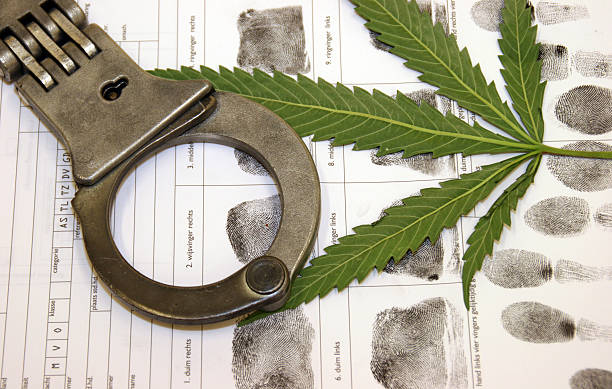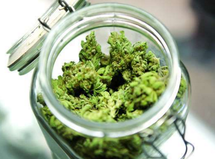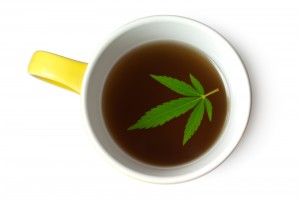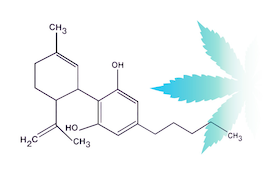|
Over 48 million or about 18% of people in the United States use Cannabis at least once per year. There is a growing trend to use Cannabis for both medicinal and recreational purposes. People are turning to Cannabis for harm reduction. Sobriety from alcohol, a substance that contributes to 10X the rate of Emergency Department visits, is gaining popularity due to the availability of Cannabis. Cannabis use is also responsible for decreased use of opioids and other pharmaceuticals. However, not all is positive with Cannabis use.
A recent study out of the University of California, San Diego School of Medicine notes an increase in Emergency Department (ED) visits among older adults between 2005-2019. The FDA has ignored regulating Cannabis products due to the Controlled Substances Act and the Department of Justice, which incorrectly deems Cannabis a Schedule I substance with high potential for abuse and no medicinal value. Alcohol is not on the Controlled Substances list. The study indicates that ED visits increased from 2 x 10-6 to 4 x 10-5, a minuscule amount. The trend is not yet alarming, yet it indicates that Cannabis is not benign and thus should be used with education, care, and guidance. The scenario usually starts when an adult child or grandchild introduces grandma or grandpa to the benefits of Cannabis. Cannabis anecdotally improves pain, mood, sleep, and appetite; most of these symptoms are associated with disorders in the elderly. The grandparent is likely aware of Cannabis and may have already used it during its anti-prohibition resurgence in the 1960s and 1970s. However, Cannabis today has grown more sophisticated with improved growing methods, new cultivar types, and new products. THC, the psychoactive compound in Cannabis, broadens the perceptual box, which can improve depression or anxiety. CBD, a relatively unknown in the 1960s, is another active constituent of the Cannabis plant which does not induce psychoactive effects. CBD has gained popularity all over the world as it can be produced from the Type III Cannabis plant that generally produces less than 0.3% of THC. In 2018, the US Farm Bill legalized Type III plants for cultivation in the U.S. THC and CBD are both FDA-approved as isolated or combined ingredients in pharmaceutical drugs. However, the Cannabis industry competes by offering products with a complex mix of hundreds of potentially active ingredients that appear to be more effective than the isolated compounds. Rather than ask their doctor for a prescription for THC or CBD, Grandma or Grandpa goes to the Cannabis dispensary. The dispensary offers a wide variety of products, including tablets, gummies, oral liquid tinctures, topical salves and even patches. The accessibility and potential benefit of acquiring a Cannabis product from a dispensary far outweighs the hassle and stigma of approaching a physician for a prescription. Most physicians are in the dark about Cannabis active constituents and their effect on the individual and the Endocannabinoid System (ECS). (That's right, there is now a defined system that can be studied due to the scientific discovery of THC and CBD.) Medical schools fail to teach their students about the ECS. As a result, interested physicians must strike out on their own to learn about Cannabis and the ECS. Despite the lack of interest, many physicians are beginning to teach themselves how to consult and recommend Cannabis to their patients. In the past two years, Florida has doubled the number of patients that use Cannabis as medicine. Concomitantly, the number of physicians approved to consult and recommend Cannabis has increased 10-fold. Unlike pharmaceuticals, physicians must take a different approach to Cannabis. The best process is currently a journey of trial and error engaged by both patient and physician. Products will vary in content, effectiveness and tolerability. The current mantra regarding Cannabis product dosage is to "start low and go slow." A strong non-judgmental relationship between patient and physician leads to the best use scenarios. Like all things in life, Cannabis use can be good or bad. Taking the responsible path to Cannabis can lead to less prescriptions, improved symptoms, and a higher quality of life for the elderly population. For professional Medical Cannabis guidance in California, contact MediCann, 1800-632-6627 or [email protected]. The Cannabis Mind Initiative is an investigation into the psychoactive properties of Cannabis. A resurgence of Cannabis has revitalized psychedelic research and relaxed fears on exploring the entropic brain. The best investigations benefit from historical perspective. The CESC presents The Cannabis Mind Initiative, part 1 For centuries, Cannabis has been used for its capacity to reduce pain, increase appetite, and help people sleep. Furthermore, it has held cultural, religious, and spiritual importance. Nevertheless, its psychotropic properties have caused contradictory perspectives on its acute and lasting effects on the mind. In the 1800s, the French psychiatrist Moreau de Tour observed parallels between Cannabis-induced states and psychosis. Subsequent studies have corroborated an association between Cannabis and acute psychosis. Recently, a Swedish study found that heavy Cannabis users have an increased risk of schizophrenia. Cannabis can lead to altered states, modify cognition, influence beliefs, produce social consequences, and lead to permanent behavioral changes. Consequently, research should be done to better understand the positive and negative effects of Cannabis' psychoactive properties.
The use of Cannabis fibers to make sails and lines likely spurred increased travel and exploration around the world. Inhabitants in Africa, Asia, Europe, and the Americas were known to smoke or fumigate Cannabis, or even concentrate its efflorescence for a stronger psychoactive effect. Despite its popularity, Cannabis was prohibited in certain places; Soudoun Sheikouni, the emir of the Joneima in Arabia, banned it as early as the 1300s and the King of Madagascar even implemented capital punishment for its use in the Merina Kingdom. Napoleon Bonaparte banned its use among his soldiers and multiple attempts were made to criminalize Cannabis in British India between 1838 and 1877. African slaves were even forbidden from using Cannabis by the Municipal Council of Rio de Janeiro in the western hemisphere. The illicit legacy of Cannabis is linked to its association with opium, which was also smoked and ingested. This led to an increase in addictive behaviors and a lucrative commercial opium trade, which was mainly benefitted by the British East India Company. As a result, China began producing its own opium and imposed tariffs on imported products. Despite this, the Company continued to cultivate and smuggle opium into China, leading to wars between the UK and China. The eventual results of war prompted the signing of the first international opium treaty in 1912, which was signed by 12 countries and prohibited the manufacturing and sale of psychoactive drugs, including opium, morphine and cocaine. The primary goal of the treaty was to restrict drug exports. In 1925, the second international opium convention followed in Geneva, where a permanent opium control board was established. At the convention, Egypt, Italy and South Africa recommended that the control measures be extended to Cannabis hashish. A sub-committee proposed the following text: “The use of Indian hemp and the preparations derived therefrom may only be authorized for medical and scientific purposes. The raw resin (charas), however, which is extracted from the female tops of the Cannabis Sativa L, together with the various preparations (hashish, chira, esrar, diamba, etc.) of which it forms the basis, not being at present utilized for medical purposes and only being susceptible of utilization for harmful purposes, in the same manner as other narcotics, may not be produced, sold, traded in, etc., under any circumstances whatsoever.” The committee indicated an acceptance of the Cannabis flower for medical uses yet proposed harmful effects from its extracted resin. India and other countries objected to this language, citing social and religious customs using Cannabis. A compromise was made banning exportation of Cannabis to countries that prohibited its use. The restrictions maintained that countries would be allowed produce and use Cannabis internally. Just over a decade later, the Marijuana Tax Act of 1937 was enacted in the U.S. The act, drafted by Harry Anslinger the head of the Federal Bureau of Narcotics, placed a tax on the sale of Cannabis. The American Medical Association opposed taxation because it imposed on prescribing and selling of Cannabis by physicians and pharmacists. Interested parties noted that the act was largely an effort to restrict the hemp industry through excessive taxation. Cheap, sustainable, and easily grown hemp threatened the timber industry. Additionally, influential business moguls, Andrew Mellon, Randolph Hearst, and the Dupont Family gained advantages from industrial hemp restrictions. After three decades, the act was eventually ruled unconstitutional. Timothy Leary a professor and activist challenged the act in a U.S. Supreme Court case on the grounds that it required self-incrimination, which violated the Fifth Amendment. A unanimous opinion written by Justice John Marshall Harlan II declared the act unconstitutional. Congress responded quickly replacing the Marijuana Tax Act by the Controlled Substances Act thus continuing the prohibition of Cannabis. Cannabis acceptance made a resurgence in 1996 through a voter proposition in California called the Compassionate Use Act. Defying federal law, the act established a defense for the possession and use of Cannabis for medical purposes. The state law contradicted the Controlled Substances Act, which placed Cannabis in Schedule I, defined as a substance with no accepted medical use and a high potential for abuse. The California law started a movement. State after state passed similar laws disempowering the federal government from prohibiting Cannabis cultivation, possession, and use. Currently, most US states have laws allowing Cannabis use under medical circumstances. Cannabis is a complex plant with many components and effects. Its psychoactive properties have both positive and negative implications, which have been experienced in a variety of contexts throughout history. Ultimately, Cannabis has been used throughout the world for centuries, as the debate over its effects and legality continues. While it has been linked to some negative outcomes, its use for medical purposes has been increasingly accepted. As research into Cannabis continues, it is likely that more of its positive effects will be discovered, which could lead to further progress in the regulation of Cannabis use. |
AuthorJean Talleyrand, M.D., Archives
September 2023
Categories |
Mailing Address: MediCann 1336 Willard Street, C • San Francisco, CA 94117
Important Disclaimer!
The information contained in this site does not intend to replace any medical advice or care by a trained physician.
Any use of this information is solely the the responsibility of the user.
Important Disclaimer!
The information contained in this site does not intend to replace any medical advice or care by a trained physician.
Any use of this information is solely the the responsibility of the user.
© COPYRIGHT 2015. ALL RIGHTS RESERVED.



 RSS Feed
RSS Feed


